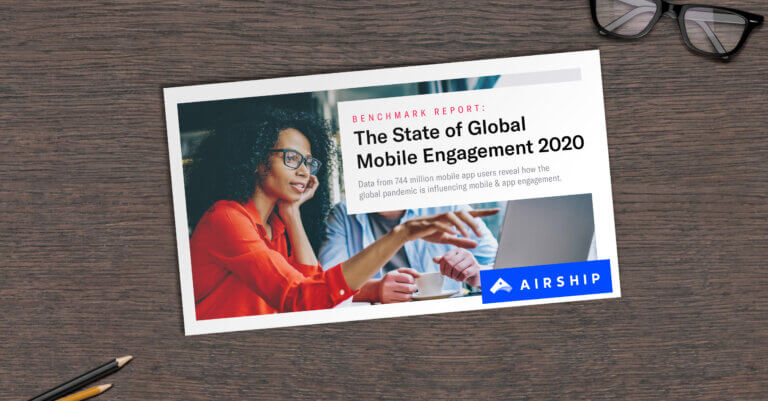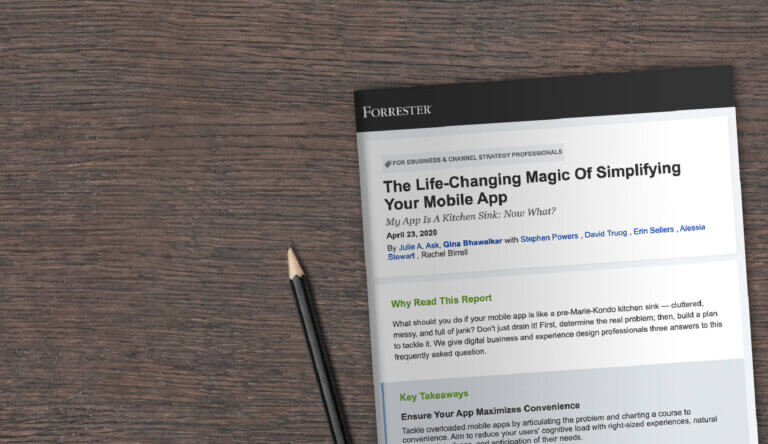
Digital CX: How Brands Can Win the New Normal and Beyond

Mike Herrick SVP of Technology
This article was originally published on Smart Brief.
The marketing industry has talked so much about digital transformation for the last five years that the buzz phrase has lost some of its impactful meaning. But it’s a serious topic if you want your company to make it through the COVID-19 crisis as well as succeed well into the future.
While everything had already been slowly going online for many years — 80% of Americans now own a smartphone — the shelter-in-place situations caused by coronavirus have accelerated digital’s momentum. Consider that mobile banking has jumped 85% since the pandemic began, while e-commerce sales have been up nearly 50%.
Post-lockdowns, digital will continue to trend upward because the barrier for in-person interactions will be higher than before (even months from now). That reality puts even more pressure on the digital components of customer experience management because consumers will choose brands more due to CX rather than which grocery store, pharmacy, or bank is closest to where they live.
Which app is the best? And which digital customer experience strategy is the easiest, or even bordering on magical? Such questions will increasingly drive brand loyalty. With that in mind, here is a trio of smart digital experiences that represent the great engagement-builders of the future.
Extending Access to the Public
On the retail front, there has been a notable spike in global brands using Alibaba’s Tmall platform to engage with consumers in China during recent months. For instance, in May, Sephora, Fenty Beauty, Bon Parfumeur, Farmacy, and Dermalogica launched on Tmall, collaborating on a digital store with 25 brands and 600 products.
What’s more, Michael Kors is livestreaming fashion shows on Tmall. Most people cannot attend exclusive events during normal times; so live fashion shows during the pandemic are an example of using digital to extend experiences to any consumer that’s online. Brands like Nike that have owned properties with critical mass can skip the middleman.
For instance, the Swoosh has been offering free exercise services via its flagship training platform, NTP, including direct access to live and recorded workouts with notable trainers like Betina Gozo, Akin Akman, and Kirsty Godso. Nike is letting folks stay in shape during the pandemic like celebrities and pro athletes do, garnering millions of customer views. Going forward, brands like Michael Kors and Nike should continue bringing high-quality events or activities into people’s homes to drive engagement, sales, and brand loyalty.
Enhancing Crowdless Sports
As the MLB, NFL, NBA and NHL and major college sports resume or make plans to, they’re taking place in empty arenas due to public health concerns. Sports marketers are looking to infuse digital experience platforms into what the TV viewing experience will be like, knowing the games are going to need interactive features that spark fans’ emotions with the absence of live crowd excitement.
As one example, the NBA is using virtual-reality features, including players and fans interacting in real-time via video screens and audio/digital platforms. Live cheers and jeers may even be heard on the court by the players. The league is also offering virtual tickets where fans can register online to have their likeness appear in a seat as a cardboard cutout — so they can have their “15 minutes of fame” as the game is televised.
All of these concepts will likely be mobile-led, given the aforementioned proliferation of smartphones. The leagues should test and experiment with these mobile-experience features on focus groups or highly targeted segments of users to ensure the greatest impact. And mobile alerts about fans’ opportunity to interact with the games are going to be crucial to sustaining TV viewers’ engagement for two or three hours.
Saving Means Sweet Relief
Cash is on consumers’ minds like almost never before. More than half of all Americans are trying to save money during the pandemic, while greater than 70% of Gen Z and millennial consumers in May said they’d spend more money online if they get 5% cashback.
For most families, the cost of petroleum and meals is regularly in their thoughts. Gas Buddy, which has been downloaded 90 million times, is there for budget-conscious consumers during these tough times. The mobile brand offers real-time, price-hike, and price-reduction alerts as the location-based app knows which gas station the user frequents.
In addition, the mobile-only rewards app Dosh is offering 10% cashback for restaurants during the pandemic. Saving money is definitely a digital experience that will drive brand loyalty for Gas Buddy and Dosh because of the financial relief they provide.
All in all, sports, fashion, and mobile marketers are starting to provide great examples of serving customers’ real needs during this crisis. While stores will eventually reopen, brands should continuously add deft digital touchpoints to their overall customer experience. While mobile apps are long known to be fiercely competitive, periods of great change like the one we are in now make it easier than ever for consumers to move on to brands that better serve their evolving needs wherever they are.
Subscribe for updates
If the form doesn't render correctly, kindly disable the ad blocker on your browser and refresh the page.
Related Posts


How to Connect with Your Customers by Simplifying Your Mobile App Strategy

